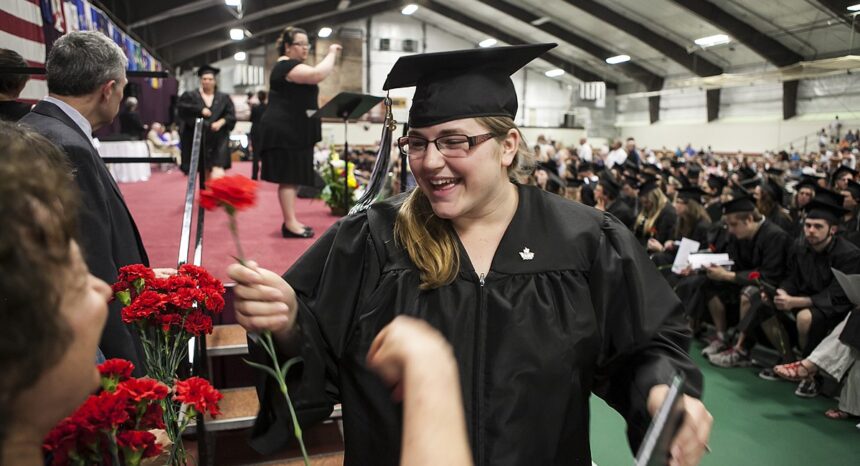Community college students in Tennessee were 2.5 times more likely to complete an associate degree within two years if they had participated in dual enrollment during high school, a recent study suggests.
The issue: The number of high school students taking college courses has risen sharply in recent decades as education leaders nationwide promote dual enrollment as a way to help more Americans earn college degrees.
Dual enrollment programs, also referred to as dual credit programs, allow students to complete courses they need to graduate high school while also earning college credit. This saves students time and reduces the cost of going to college. Research indicates there are other benefits as well. For example, students who participate in dual enrollment are more likely to graduate high school, according to the Community College Research Center at Columbia University, a leading authority. They also are more likely to go to college.
The vast majority of dually enrolled students earn college credit through partnerships their school districts have formed with local community colleges. Oftentimes, dual enrollment courses are free or offered at deeply discounted tuition rates.
A study worth reading: “The Answer Is Yes: Dual Enrollment Benefits Students at the Community College,” published in Community College Review, 2017.
About the study: A team of researchers from Northeast State Community College and East Tennessee State University sought to determine whether community college students who had participated in dual enrollment during high school performed better than students who had not. The team looked specifically at remediation rates and degree completion.
The researchers focused on students who attended high school and community college in Tennessee, which received national attention for becoming the first state to offer free community college tuition to its high school graduates through the Tennessee Promise program in 2015.
The team looked at students who had entered Northeast State Community College in Blountville, Tennessee as full-time freshmen. The sample comprised 1,232 students, 246 of whom had taken dual enrollment courses during high school. The study does not indicate how many college credits these students had earned during high school.
Key findings:
- Community college students who took dual enrollment courses in high school were 9 percent less likely to require remedial help than those who did not.
- More than 30 percent of students who had been dually enrolled completed an associate degree on time. Fifteen percent of students who had not participated in dual enrollment were able to do that.
- Nearly half — 46 percent — of students who were dually enrolled earned associate degrees within three years, compared to 33 percent of those who were not.
Other resources:
- The American Association of Community Colleges is an advocacy organization that represents nearly 1,200 two-year, associate-degree granting institutions. Similar state-level organizations include the Community College League of California, Michigan Community College Association and Association of Florida Colleges.
- The National Alliance of Concurrent Enrollment Partnerships has developed standards to ensure the quality of college coursework taught by high school teachers. The agency also offers accreditation.
- The Education Commission of the States offers a state-by-state comparison of policies designed to ensure the quality of dual enrollment courses, especially those taught by high school teachers at high schools.
Other research:
- A 2017 study published in Educational Researcher, “Dual Credit, College Type, and Enhanced Degree Attainment,” found that students who participated in dual enrollment programs in high school were much more likely to earn bachelor’s degrees later in life than those who had no experience with dual enrollment.
- A 2017 study from the Community College Research Center provides data on the percentage of new community college students in each state who are high school students participating in dual enrollment. Participation ranged from 1 percent in Georgia to 34 percent in Kentucky in fall 2010.
- A 2011 working paper for the National Center for Postsecondary Research at Columbia University, “Determinants of Students’ Success: The Role of Advanced Placement and Dual Enrollment Programs,” suggests that students who took dual enrollment courses are more likely to go to college after graduating high school than students who took Advanced Placement courses.
Photo by obtained from Wikimedia and used under a Creative Commons license.


Expert Commentary